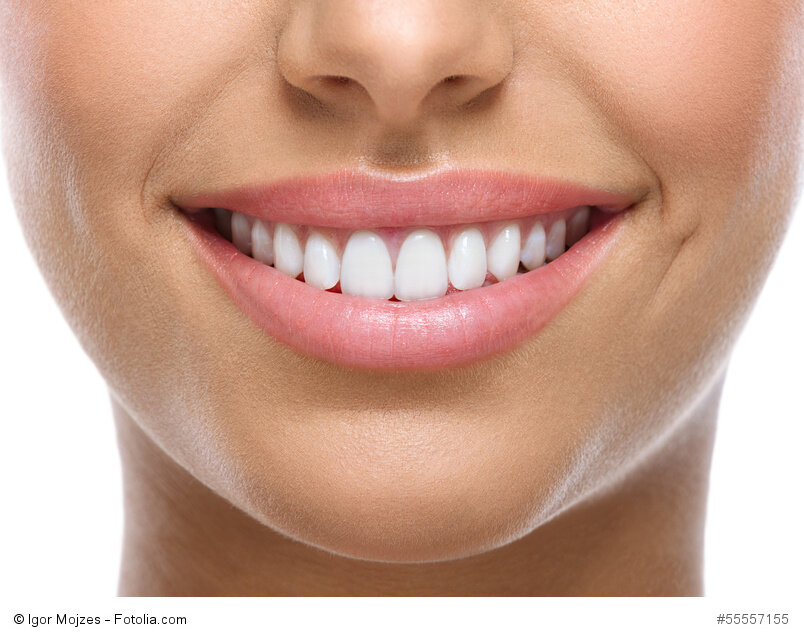At first, the term red-white aesthetic” might seem a little obscure – but its meaning actually requires very little explanation. When dentists and dental technicians consider the red-white aesthetic, they are looking mainly to achieve visual harmony between the red and white “portions” of a smile.
“Guaranteeing a good red-white aesthetic is an important part of our work,” says Peter Meier, master dental technician at the Dentaprime Clinic. “The result of a restoration can only look natural and attractive if the lips, gums and teeth are in balance.”
Dentists and dental technicians must work together closely to achieve this, since there is no “one-size-fits-all” solution when it comes to the perfect smile.

Even the choice of implant material can affect the red-white aesthetic. If the patient so wishes, the implantologist can create their implants from white bioceramic zirkonium oxide, which has no risk of “shining through” in the small gap between the dental prosthesis and the gum. The same advantage cannot be guaranteed for titanium implants. This means that zirkonium oxide implants are highly recommended in cases where the gum is not expected to join up entirely with the edge of the prosthesis (this is sometimes necessary due to medical reasons).
Likewise, the creation of the prosthesis itself requires manual dexterity and a great eye for detail.
“The sizing and fit of the dental prosthesis should be optimal,” explains Peter Meier. “Even small deviations (from the look of the patient’s natural teeth) will be noticeable.”
And such deviations won’t just be evident to dental professionals, but also to the untrained eye, since the proportions perceived as beautiful or attractive are determined by the instinctive response of the observer – not by an arbitrary measure.
For an optimal red-white aesthetic to be achieved, the dental prosthesis must be neither too large nor too small and must offer the correct degree of support to the lips. This means that the fit and positioning of the prosthesis must be absolutely perfect, never too far forward (which would cause the lips to protrude outwards) or too far back (which would cause them to have a sunken appearance).
“Because of all this, it’s important that the dental technician is able to take a look at the patient,” says Peter Meier. “Photographs or digital impressions are great aids, but cannot replace an in-person evaluation by a trained eye.”
At the Dentaprime Clinic, implantologists, dentists and dental technicians work together under one roof. For Peter Meier, this constitutes the ideal working environment: not only can he speak to patients in person in his role as a dental technician, he also has direct contact with the dentists who are treating them. This enables the team of dental professionals to offer a complete treatment plan that achieves optimal results and restores a radiant smile to the patient’s face.


